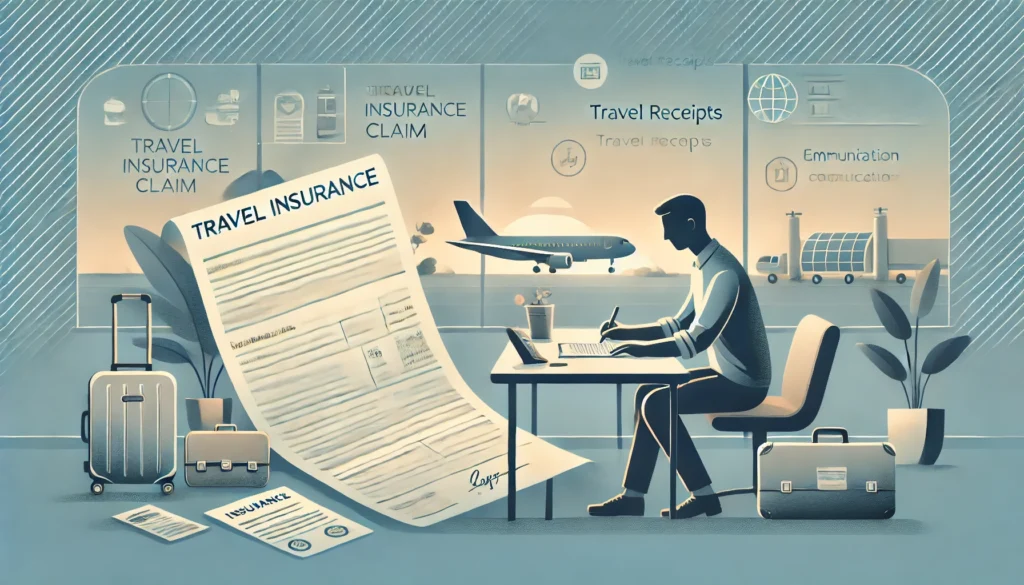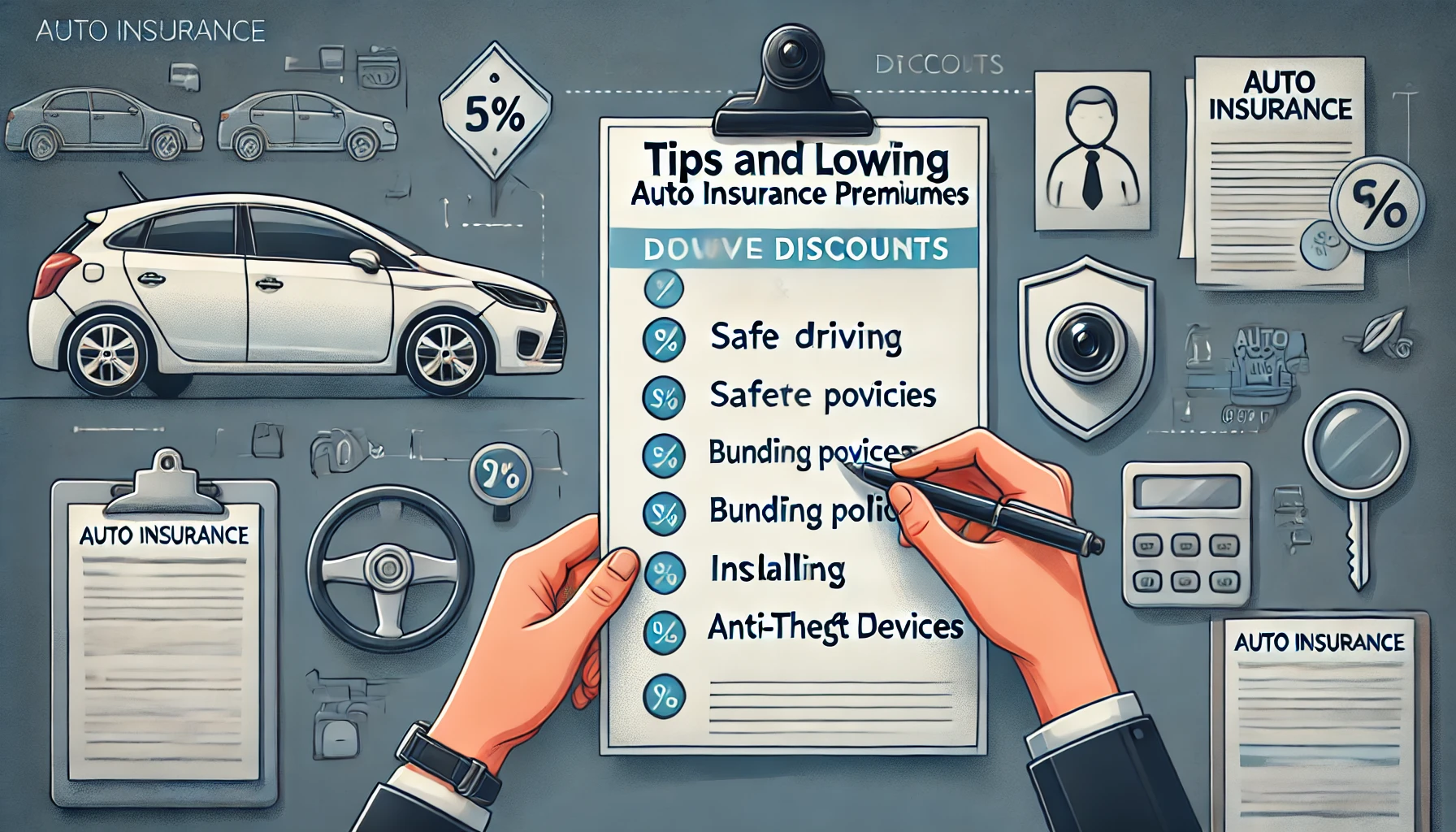Introduction
Traveling is often an exhilarating experience, filled with adventures, new cultures, and unforgettable memories. However, unforeseen circumstances can arise that turn an exciting journey into a stressful ordeal. Whether it’s a medical emergency, a canceled flight, or lost luggage, having travel insurance is essential to mitigate financial losses and provide peace of mind. But what happens when you need to file a claim? Understanding the claims process is just as important as purchasing the insurance itself. This comprehensive guide will cover everything you need to know about filing a travel insurance claim, from preparation to resolution.
1. Understanding Your Travel Insurance Policy
Before you embark on the claims process, it’s crucial to fully understand your travel insurance policy. Familiarizing yourself with the details of your coverage can help you navigate the claims process more effectively.
#1. What type of job are you looking for?
#2. What is your work experience level?
#3. What is your English level?
#4. Where are you willing to work?
#5. When can you start?
1.1. Types of Coverage
Travel insurance policies can vary widely in terms of coverage options. Here are some common types of coverage you may encounter:
1.1.1. Trip Cancellation Insurance
This type of insurance reimburses you for non-refundable expenses if you have to cancel your trip for a covered reason. Common covered reasons include:
- Illness or injury: If you or a family member falls ill before your trip.
- Natural disasters: Such as hurricanes or earthquakes impacting your destination.
- Job loss: Unforeseen job loss that prevents you from traveling.
Example: If you booked a non-refundable trip to Europe but had to cancel due to a sudden family emergency, trip cancellation insurance can reimburse you for the cost of your flights and hotel reservations.
1.1.2. Medical Travel Insurance
Medical travel insurance is essential for those traveling abroad, as it covers medical expenses incurred due to illness or injury. This type of insurance often includes:
- Emergency medical coverage: Costs for hospital stays, doctor visits, and surgeries.
- Medical evacuation: Transportation to the nearest medical facility in emergencies.
- Repatriation: Returning a deceased traveler to their home country.
Example: If you suffer a serious injury while hiking in the Alps, medical travel insurance can cover the hospital bills and any necessary evacuation.
1.1.3. Baggage Loss Insurance
Baggage insurance provides coverage for lost, stolen, or damaged luggage. This can include:
- Lost luggage: Compensation if your checked bag does not arrive.
- Stolen items: Coverage for personal belongings stolen during your trip.
- Delayed baggage: Compensation for essential items you need to purchase while waiting for your luggage.
Example: If your suitcase is lost during a flight, baggage insurance can help you recover the costs of replacing necessary items like clothing and toiletries.
1.1.4. Travel Delay Insurance
Travel delay insurance compensates you for expenses incurred due to delays in your travel plans. Coverage typically includes:
- Accommodation costs: Reimbursement for hotel stays during delays.
- Meal expenses: Compensation for food costs incurred while waiting for delayed transportation.
- Transportation costs: Coverage for additional transportation to and from the airport.
Example: If your flight is delayed by several hours, this insurance can cover the costs of meals and accommodation until you reach your destination.
1.2. Exclusions
Every travel insurance policy comes with exclusions—specific situations that are not covered. Understanding these exclusions is crucial for setting realistic expectations about your coverage. Common exclusions include:
- Pre-existing conditions: Many policies do not cover medical issues that existed prior to purchasing the insurance.
- High-risk activities: Some insurers may exclude coverage for injuries related to high-risk activities like skiing or scuba diving.
- Alcohol or drug use: Claims related to incidents that occurred while under the influence may be denied.
1.3. Coverage Limits
Each type of coverage typically has a maximum limit, which is the highest amount the insurer will pay for a specific claim. It’s essential to know these limits to understand the financial protection provided by your policy.
Example: A policy may cover up to $100,000 for medical expenses but only $500 for baggage loss. Ensure that the coverage limits align with potential costs you may encounter during your travels.
1.4. Claims Process Overview
Most insurance companies provide a general overview of their claims process in their policy documents. Familiarize yourself with the steps outlined, including how to file a claim and the information required.
3. Filing the Claim
Once you’ve prepared the necessary documentation and contacted your insurer, it’s time to file the claim.
3.1. Claim Form
Most insurance companies require you to fill out a claim form. This form typically requests information about the incident, your travel details, and the specific coverage you are claiming. Here’s what to include:
- Personal Information: Your name, address, policy number, and contact information.
- Incident Details: A detailed account of what happened, including dates, times, and locations.
- Itemized List of Expenses: Clearly list all expenses related to the claim, along with corresponding receipts.
3.2. Submit Documentation
Once you’ve completed the claim form, gather all supporting documents and submit them to your insurer. Many providers allow you to submit claims online, while others may require you to send documents via email or regular mail. Make sure to keep copies of everything you submit for your records.
3.3. Keep Track of Deadlines
Insurance policies often have specific deadlines for filing claims. Check your policy for any time limits and ensure you submit your claim promptly to avoid delays or denial.
4. After Filing the Claim
Once your claim has been submitted, there are a few additional steps to take:
4.1. Confirmation of Receipt
After submitting your claim, your insurer should provide confirmation that they received it. If you do not receive this confirmation within a few days, follow up to ensure it has been processed.
4.2. Claim Assessment
The insurance company will review your claim and the supporting documentation. This process may take some time, depending on the complexity of the claim and the insurer’s workload. Be patient, but stay proactive by checking in with your insurer for updates.
4.3. Additional Information
Your insurer may request additional information or documentation during their assessment. Respond promptly to any requests to avoid delays in processing your claim.
4.4. Claim Decision
After reviewing your claim, the insurance company will make a decision. They will either approve the claim and issue payment or deny it with a detailed explanation of the reasons for denial.
5. What to Do If Your Claim Is Denied
Receiving a denial can be frustrating, but it’s essential to understand your options if this happens.
5.1. Understand the Reasons for Denial
Review the denial letter carefully to understand the reasons for the decision. Common reasons for denial include:
- Insufficient documentation: If you didn’t provide enough evidence to support your claim.
- Policy exclusions: If the claim falls under an exclusion outlined in your policy.
- Pre-existing conditions: If the claim is related to a medical condition that existed before purchasing the policy.
5.2. Contact Your Insurer
Reach out to your insurer to discuss the denial. Ask for clarification and whether there is any possibility to appeal the decision.
5.3. Gather Additional Evidence
If your insurer is open to re-evaluating the claim, gather additional evidence to support your case. This may include:
- Medical records: Additional documentation from healthcare providers.
- Witness statements: Statements from individuals who witnessed the incident.
- Photos: Visual evidence that supports your claim.
5.4. Appeal the Decision
If you believe your claim was wrongfully denied, you have the right to appeal. Follow the appeals process outlined by your insurer, which usually involves submitting a written appeal along with any additional documentation you have gathered.
6. Tips for a Smooth Claims Process
To ensure your claims process goes as smoothly as possible, consider the following tips:
6.1. Keep Copies of Everything
Always maintain copies of all documents, receipts, and correspondence related to your claim. This will serve as a useful reference throughout the process.
6.2. Be Honest and Accurate
When filling out your claim form and providing documentation, be honest and accurate. Providing false or misleading information can lead to claim denial or other legal issues.
6.3. Stay Organized
Create a dedicated folder for your travel insurance documents and claims-related materials. This will help you easily access the information you need when communicating with your insurer.
6.4. Follow Up Regularly
Stay proactive by checking in with your insurer regularly for updates on your claim status. Polite follow-ups can help keep your claim moving along the process.
6.5. Know Your Rights
Familiarize yourself with your rights as a policyholder. If you encounter difficulties or feel that your claim is being mishandled, don’t hesitate to escalate the issue within the insurance company or seek assistance from a regulatory body.
7. Conclusion
Filing a travel insurance claim can be a daunting experience, but being well-prepared and informed can make the process much smoother. Understanding your policy, gathering the necessary documentation, and following the claims process step by step are crucial for successfully navigating any unexpected challenges during your travels.
If you find yourself needing to file a claim, remember to stay organized, communicate clearly with your insurer, and be patient throughout the assessment process. Should your claim be denied, don’t lose hope; there are avenues to appeal the decision and seek further clarification.
Travel insurance is designed to protect you, and knowing how to effectively file a claim ensures that you can receive the benefits you’ve paid for when you need them most. With the right preparation and understanding, you can travel with confidence, knowing that you have a safety net in place.
8. Understanding Specific Claim Scenarios
Different types of claims may require different approaches and documentation. Here, we will explore specific scenarios that might necessitate a travel insurance claim, along with tips on how to handle them effectively.
8.1. Medical Emergencies
Medical emergencies are one of the most common reasons travelers need to file a claim. Whether it’s a sudden illness or an accident, here’s how to navigate the claims process for medical emergencies.
8.1.1. Immediate Steps to Take
- Seek Medical Attention: Your health is the priority. If you are in a foreign country, find the nearest hospital or clinic.
- Contact Your Insurer: Notify your travel insurance provider as soon as possible. Some policies require you to inform them before seeking medical care.
8.1.2. Documentation Required
- Medical Records: Obtain detailed medical reports from the healthcare provider, including diagnoses, treatments, and any medications prescribed.
- Receipts: Keep all receipts for medical expenses, including consultation fees, tests, and medications.
- Travel Insurance Card: Present your insurance card to the medical facility, if applicable.
8.1.3. Filing the Claim
After receiving care, follow these steps to file your claim:
- Complete the Claim Form: Fill out the necessary claim form provided by your insurer.
- Submit Documentation: Include all medical records, receipts, and any other relevant documents.
- Keep Copies: Always maintain copies of everything you submit.
8.2. Trip Cancellations
Trip cancellations can arise due to various reasons, from personal emergencies to unexpected events. Here’s how to handle claims related to trip cancellations.
8.2.1. Reasons for Cancellations
Common reasons that may be covered include:
- Illness or Injury: If you or a close family member falls ill.
- Natural Disasters: Events like hurricanes or earthquakes affecting your destination.
- Job Loss: If you lose your job shortly before the trip.
8.2.2. Documentation Required
- Proof of Cancellations: Include any documentation from airlines, hotels, or tour companies confirming your canceled bookings.
- Medical Documentation: If the cancellation is due to illness, provide medical certificates.
- Incident Reports: For natural disasters, you may need reports from authorities or news outlets.
8.2.3. Filing the Claim
- Complete the Claim Form: Clearly indicate the reason for cancellation and provide detailed information.
- Attach Documentation: Include all supporting documents, such as proof of booking and cancellations.
- Submit Promptly: File your claim as soon as you cancel to avoid missing deadlines.
8.3. Lost or Stolen Luggage
Lost or stolen luggage can disrupt your travels significantly. Here’s how to handle claims related to baggage issues.
8.3.1. Immediate Steps to Take
- Report to Authorities: If your luggage is stolen, file a police report. If it’s lost by an airline, report it immediately at the airline’s counter.
- Get a Property Irregularity Report: For lost luggage, obtain a Property Irregularity Report (PIR) from the airline, which will be crucial for your claim.
8.3.2. Documentation Required
- Police Report: Include a copy of the police report if your luggage was stolen.
- PIR: Attach the Property Irregularity Report from the airline.
- Receipts: Keep receipts for any essential items you purchase while waiting for your luggage.
8.3.3. Filing the Claim
- Complete the Claim Form: Indicate the items lost or stolen and provide details.
- Attach Supporting Documents: Include the police report, PIR, and receipts for necessary purchases.
- Submit Promptly: File your claim as soon as you have the required documents to ensure timely processing.
8.4. Travel Delays
Travel delays can occur due to weather, mechanical issues, or other unforeseen circumstances. Here’s how to handle claims related to travel delays.
8.4.1. Immediate Steps to Take
- Contact Your Airline: Inquire about the cause of the delay and any potential compensation.
- Keep Receipts: Save all receipts for expenses incurred due to the delay, such as meals and accommodation.
8.4.2. Documentation Required
- Proof of Delay: Collect documentation from the airline regarding the delay.
- Receipts: Keep receipts for any additional expenses incurred as a result of the delay.
8.4.3. Filing the Claim
- Complete the Claim Form: Provide details about the delay and expenses incurred.
- Attach Supporting Documents: Include proof of the delay and receipts for additional expenses.
- Submit Promptly: File your claim as soon as possible to adhere to deadlines.
9. Common Mistakes to Avoid When Filing a Claim
Filing a travel insurance claim can be tricky, and there are common pitfalls that many travelers encounter. Here are some mistakes to avoid:
9.1. Not Reading the Policy
One of the biggest mistakes travelers make is not fully understanding their insurance policy. Always read the policy documents carefully to know what is covered and what is not.
9.2. Delaying the Claims Process
Time is of the essence when filing a claim. Delaying your claim can lead to missed deadlines and potentially losing your right to compensation. As soon as an incident occurs, start gathering documentation and contact your insurer.
9.3. Incomplete Documentation
Submitting incomplete documentation is a common reason for claim denial. Always double-check that you have included all required documents and receipts before submitting your claim.
9.4. Providing False Information
Honesty is critical when filing a claim. Providing false or misleading information can lead to denial of the claim and potentially legal issues. Always provide accurate information and documentation.
9.5. Ignoring Follow-Up
After submitting your claim, it’s essential to follow up with your insurer. If you do not receive a confirmation of receipt within a few days, reach out to ensure your claim is being processed.
10. How to Appeal a Denied Claim
If your claim is denied, you have the right to appeal the decision. Here’s how to navigate the appeals process:
10.1. Review the Denial Letter
Carefully read the denial letter to understand the specific reasons for the decision. This will help you identify the areas you need to address in your appeal.
10.2. Contact Your Insurer
Reach out to your insurer to discuss the denial. Ask for clarification on the reasons and whether there’s a possibility of re-evaluating the claim.
10.3. Gather Additional Evidence
If your insurer is open to re-evaluating the claim, gather additional evidence to support your case. This may include:
- Medical records: Further documentation from healthcare providers if your claim is related to medical expenses.
- Witness statements: Testimonies from individuals who witnessed the incident.
- Photos: Visual evidence that supports your claim.
10.4. Write a Formal Appeal Letter
When appealing, write a formal appeal letter that includes:
- Your policy number: Clearly state your insurance policy number.
- Details of the claim: Provide a brief overview of the claim and the reason for denial.
- Supporting documents: Attach any additional evidence you have gathered.
- Your request: Clearly state that you are appealing the denial and request a re-evaluation of your claim.
10.5. Submit the Appeal
Submit your appeal letter and supporting documents according to your insurer’s guidelines. Ensure that you keep copies of everything for your records.
11. Resources and Support for Travelers
When navigating the claims process, it’s helpful to know where to turn for additional resources and support. Here are some options:
11.1. Travel Insurance Customer Support
Most insurance companies have dedicated customer support teams to assist you with any questions or concerns. Don’t hesitate to reach out for guidance throughout the claims process.
11.2. Consumer Advocacy Groups
Organizations focused on consumer rights can offer valuable information and support if you encounter difficulties with your insurer. They may provide resources or guidance on how to escalate your concerns.
11.3. Online Forums and Communities
Travel forums and online communities can be excellent resources for sharing experiences and getting advice from fellow travelers. Platforms like TripAdvisor or Reddit often have sections dedicated to travel insurance discussions.
11.4. Regulatory Bodies
If you believe your insurer is not handling your claim appropriately, you can reach out to regulatory bodies or ombudsman services in your country. These organizations can help investigate your complaint and advocate on your behalf.
12. Conclusion
Filing a travel insurance claim can be a complex and sometimes overwhelming process, but understanding the necessary steps can significantly ease the journey. By familiarizing yourself with your policy, preparing documentation, and knowing how to navigate the claims process, you can increase your chances of receiving the compensation you deserve.
Always remember to stay organized, be honest, and communicate effectively with your insurer. If your claim is denied, don’t hesitate to appeal and seek additional evidence to support your case. With the right knowledge and preparation, you can travel with confidence, knowing you have a safety net in place for unexpected challenges.
As you embark on your adventures, consider travel











